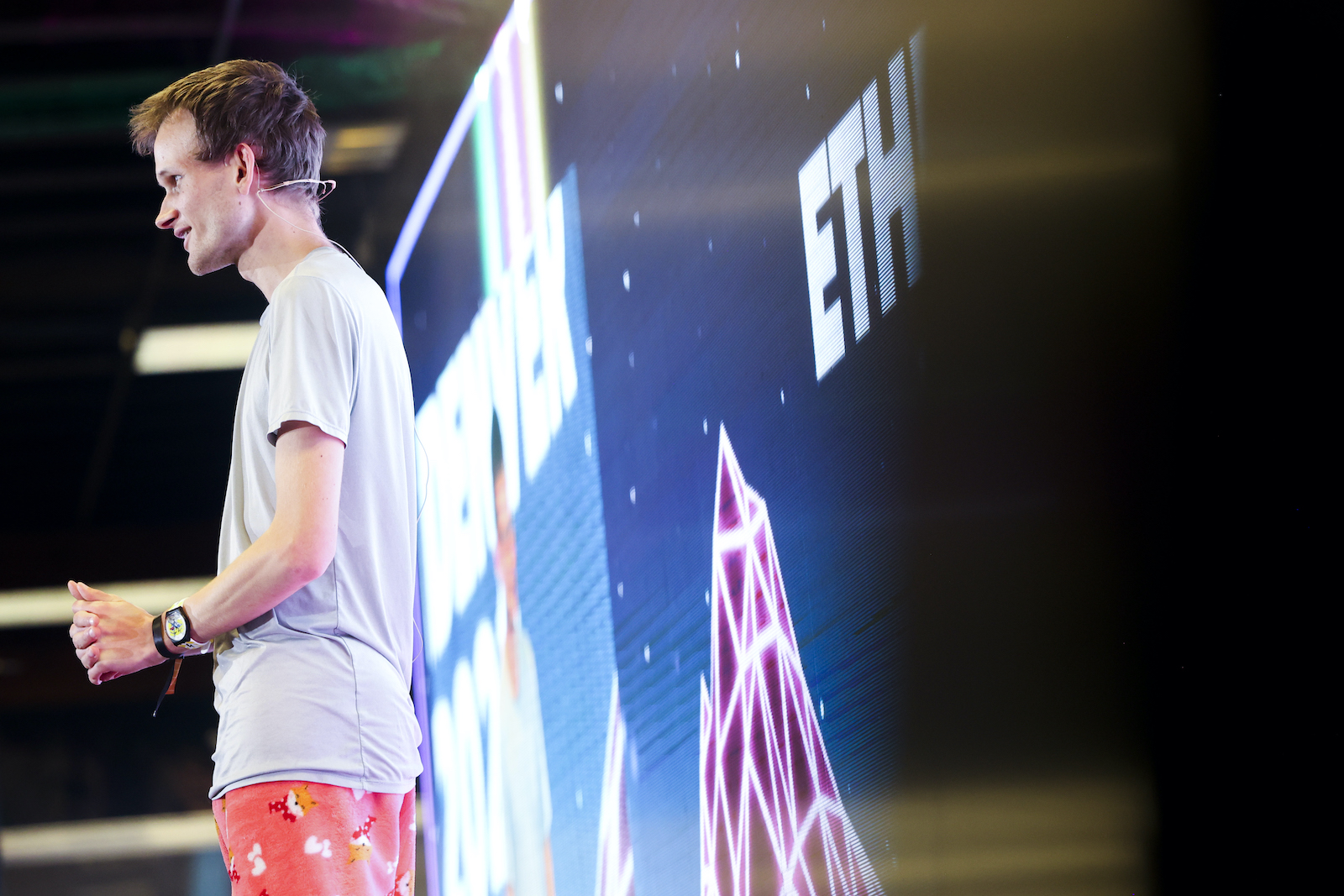Ethereum: The Merge and Why It Matters

Ethereum co-founder Vitalik Buterin speaks at ETHDenver on February 18, 2022 in Denver, Colorado.
Photo by Michael Ciaglo/Getty Images
The last three weeks have seen one of the biggest events in the crypto space. Ethereum, the second largest blockchain after bitcoin, has moved its operating model from what is known as proof of work to proof of stake.
One of the biggest benefits of this will be a reduction in energy consumption by the blockchain that some estimate could be equivalent to the entire annual energy consumption of Switzerland.
BRINK spoke to Margaux Nijerk, Ethereum protocol reporter at CoinDesk, who explained what is happening.
NIJKERK: Ever since its inception, the Ethereum blockchain has wanted to move its consensus mechanism from a proof-of-work model to a proof-of-stake model. “The merge,” as this is called, is basically seeing these two models, the proof-of-work model and the proof-of-stake model, merge together and continue on under a proof-of-stake model. That’s why it’s been dubbed the merge.
This has never been done before in blockchain history and has required years of engineering, research, creativity, manpower to figure out how you switch a blockchain from one blockchain model to a next without turning off everything in the ecosystem, since there are so many applications and an economy that has been built on top of the Ethereum blockchain.
One of the analogies that I like best that sort of describes this whole situation is to imagine you’re driving a car on the highway that’s filled with gasoline. And midway through your driving, your car automatically switches from gasoline to an electric system without having that car shut down.
BRINK: What is the economy that’s built on Ethereum?
NIJKERK: Ethereum really is a base project where not only can you practice decentralized finance through ether, its native token, but it also carries lots of decentralized applications. Hundreds of organizations and applications are powered by Ethereum. It’s estimated to be a $60 billion industry that’s built on top of the Ethereum blockchain. And so having that base blockchain change, all of a sudden, to a new model really poses a big risk if not done correctly. That’s why it’s taken so many years for them to test how to switch without shutting down this ecosystem.
There is some argument about whether having validators makes the proof-of-stake systems less secure compared to proof of work. But the slashing mechanisms behind that, like the financial penalties, are pretty grave.
This switch will reduce Ethereum’s energy consumption by 99.95%. The proof-of-work energy consumption of Bitcoin, for instance, is equivalent to that of Switzerland. So it’s a lot of energy that will be saved for Ethereum, but in addition to energy consumption, developers also believe that moving it to a proof-of-stake model is going to make the network more secure.
The Difference Between Proof of Work and Proof of Stake
BRINK: Can you explain exactly what is meant by proof of work and proof of stake.
NIJKERK: Proof of work basically puts the responsibility on crypto miners to add blocks to the blockchain. In the simplest terms, when a transaction comes in and they want to add that to the blockchain, miners compete to solve a difficult cryptographic math problem. Whoever gets the answer to that, reaps the reward (for Bitcoin proof-of-work blockchain, the reward is in Bitcoin), and then that block gets added to the blockchain.
In order to be able to solve these cryptographic problems, you need very intensive computer hardware and you have to invest in massive computers, and because so much computing is used to solve that cryptographic problem, that is what creates this energy issue.
Proof of stake, however, is run by validators. In order to participate in this, you stake 32 ether (ETH), which right now is about $48,000. When a transaction comes in, a validator is randomly chosen to validate blocks. The more ether (ETH) you’ve staked, the higher chance you’ll be chosen to add that block to the blockchain, but there’s no cryptographic problem to solve, so it doesn’t require a lot of energy. And before it is added to the blockchain, other validators have to sign off on that.
BRINK: Isn’t there a risk that someone could pay their 32 ether to join and then perform a corrupt or dishonest transaction?
NIJKERK: There are rules set in place that punish validators that misbehave. And it’s very easy to find it on the blockchain if they decide to not include a transaction or not add blocks to the blockchain. If a validator is not acting honestly or is acting maliciously, they will be slashed, as it’s called, which basically means that they will be penalized financially.
Right now, when you participate in the validation process, you are locking up a minimum 32 ETH, you will lose some of that if the validator does not act honestly. Since validating is all visible on a blockchain, one can see if a validator proposes two blocks for the same slot, or signs to different attestations for the same target. When caught, it will be penalized. This is to ensure the security of the network so that blocks are added properly without compromising the integrity of the network.
There is some argument about whether having validators makes the proof-of-stake systems less secure compared to proof of work. But the slashing mechanisms behind that, like the financial penalties, are pretty grave.
BRINK: Do you think the merge will be successful?
NIJKERK: There was always a non-zero chance that something could go wrong, but I’m cautiously optimistic because they’ve really tested this thing through and through. The merge happened on September 15, and it went incredibly well. There seemed to be only very minor issues, and developers seem to have been impressed with how well it went. This is thanks to the number of test networks and shadow forks the developers worked on in order to make sure that the merge would go as smooth as possible. Now, Ethereum operates fully under a proof-of-stake consensus mechanism.









